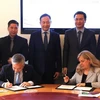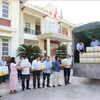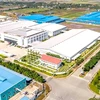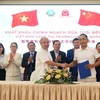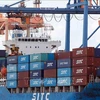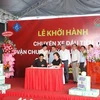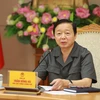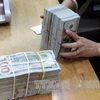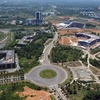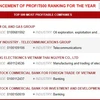The Mekong Delta region exported over 2.7 million tonnes of high quality rice, accounting for 52 percent of total rice exports during the first ten months of this year.
High quality rice exports increased by 44 percent compared to the same period last year, generating 2.32 billion USD since the beginning of 2014.
The region has implemented a number of effective marketing plans with a focus on quality and competitive prices. As a result, orders from the European Union, North America, Asia and Africa have increased significantly.
The two recent harvests had a total output of 24.3 million tonnes, with high quality rice and fragrant rice accounting for over 70 percent.
Recently, the region’s rice institute has selected new rice varieties with high yields to supply farmers.
Additionally, a number of enterprises have increased their rice cultivation areas to meet export demands and contribute to improving the image of rice from the Mekong Delta region and Vietnam in general.
Dubbed as the country’s rice granary, the Mekong Delta region produces over 50 percent of the total food output, and provides 90 percent of the country’s exported rice, 70 percent of exported fruits and 60 percent of exported seafood.-VNA
High quality rice exports increased by 44 percent compared to the same period last year, generating 2.32 billion USD since the beginning of 2014.
The region has implemented a number of effective marketing plans with a focus on quality and competitive prices. As a result, orders from the European Union, North America, Asia and Africa have increased significantly.
The two recent harvests had a total output of 24.3 million tonnes, with high quality rice and fragrant rice accounting for over 70 percent.
Recently, the region’s rice institute has selected new rice varieties with high yields to supply farmers.
Additionally, a number of enterprises have increased their rice cultivation areas to meet export demands and contribute to improving the image of rice from the Mekong Delta region and Vietnam in general.
Dubbed as the country’s rice granary, the Mekong Delta region produces over 50 percent of the total food output, and provides 90 percent of the country’s exported rice, 70 percent of exported fruits and 60 percent of exported seafood.-VNA
